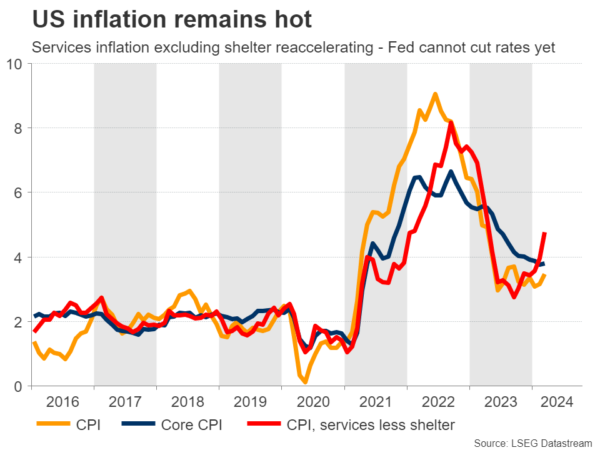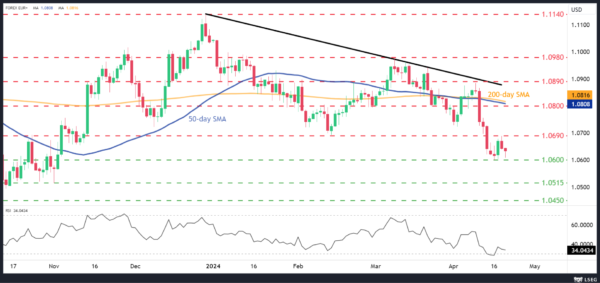- Dollar goes on a rampage as traders unwind Fed rate cut bets
- Risk aversion in stock markets amid Iran tensions helps too
- Upcoming US releases will decide whether rally can go further
Dollar shines bright
It’s been a phenomenal year for the US dollar so far. The greenback has gained more than 4% against a basket of currencies, turbocharged by a series of solid economic readings that have forced investors to dial back bets of imminent Fed rate cuts.
Heavy government spending and a surge in population growth driven by an influx of immigration have helped shield the US economy, bolstering the labor market and consumer demand.
Reflecting this resilience, inflationary pressures have been persistently hot. In fact, some measures of underlying inflation have re-accelerated in recent months, making it extremely difficult for the Fed to cut interest rates.

Market pricing now points to less than two rate cuts this year, down from six just a few months ago. Hence, the market is pricing a higher-for-longer scenario for interest rates, which has helped bolster the US dollar.
Beyond that, the latest correction in stock markets and the tensions in the Middle East have further boosted the safe-haven US dollar through the risk sentiment channel.
Barrage of data coming up
Next week’s US data releases could go a long way in deciding whether this rally still has miles left in the tank. The ball will get rolling on Tuesday with the S&P Global business surveys for April, ahead of the latest batch of durable goods orders on Wednesday.
But the main event will probably come on Thursday with the advance estimate of GDP for the first quarter. Economist forecasts suggest the US economy grew by an annualized pace of 2.1% last quarter.
As for any surprises, there is some scope for a stronger-than-expected GDP print, considering that the Atlanta Fed GDPNow model estimates growth at 2.9% instead. This model has a fairly strong track record in predicting GDP surprises, and if this is the case, that could provide more fuel for the dollar.

Taking a look at the euro/dollar chart, the pair has been trading in a narrow range between 1.0690 and 1.0600 for about a week now. A break in either direction will reveal what’s next. More broadly, the price has been in a downtrend since the beginning of the year.
Finally on Friday, the core PCE price index for March will hit the markets, alongside personal consumption and income figures. Forecasts suggest core PCE inflation held steady at 2.8% in annual terms.
That said, this dataset might attract less attention this time, as it will be released after the GDP numbers, which will give investors a sense of how the economy and inflation evolved in March.









